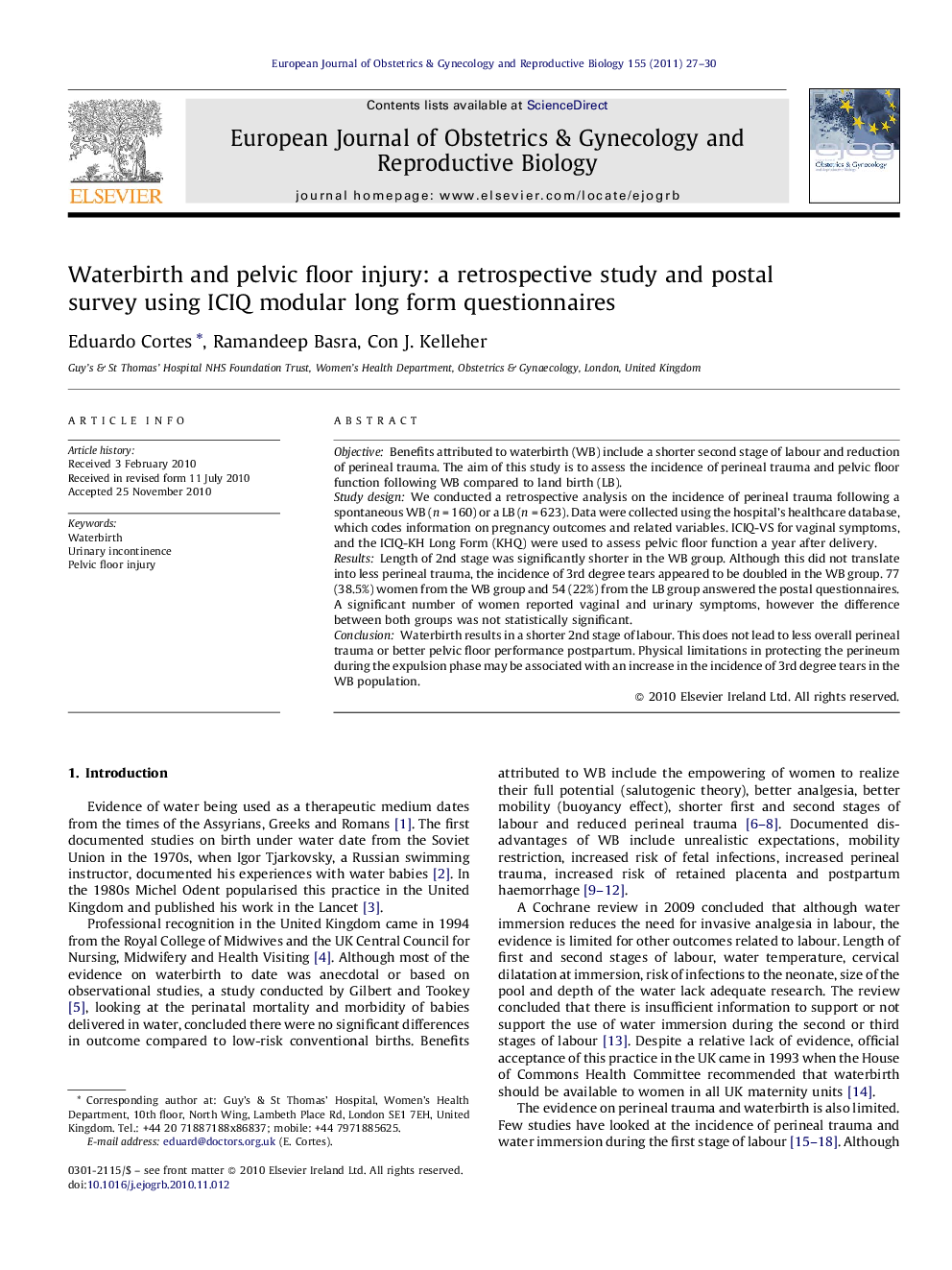| Article ID | Journal | Published Year | Pages | File Type |
|---|---|---|---|---|
| 3920943 | European Journal of Obstetrics & Gynecology and Reproductive Biology | 2011 | 4 Pages |
ObjectiveBenefits attributed to waterbirth (WB) include a shorter second stage of labour and reduction of perineal trauma. The aim of this study is to assess the incidence of perineal trauma and pelvic floor function following WB compared to land birth (LB).Study designWe conducted a retrospective analysis on the incidence of perineal trauma following a spontaneous WB (n = 160) or a LB (n = 623). Data were collected using the hospital's healthcare database, which codes information on pregnancy outcomes and related variables. ICIQ-VS for vaginal symptoms, and the ICIQ-KH Long Form (KHQ) were used to assess pelvic floor function a year after delivery.ResultsLength of 2nd stage was significantly shorter in the WB group. Although this did not translate into less perineal trauma, the incidence of 3rd degree tears appeared to be doubled in the WB group. 77 (38.5%) women from the WB group and 54 (22%) from the LB group answered the postal questionnaires. A significant number of women reported vaginal and urinary symptoms, however the difference between both groups was not statistically significant.ConclusionWaterbirth results in a shorter 2nd stage of labour. This does not lead to less overall perineal trauma or better pelvic floor performance postpartum. Physical limitations in protecting the perineum during the expulsion phase may be associated with an increase in the incidence of 3rd degree tears in the WB population.
